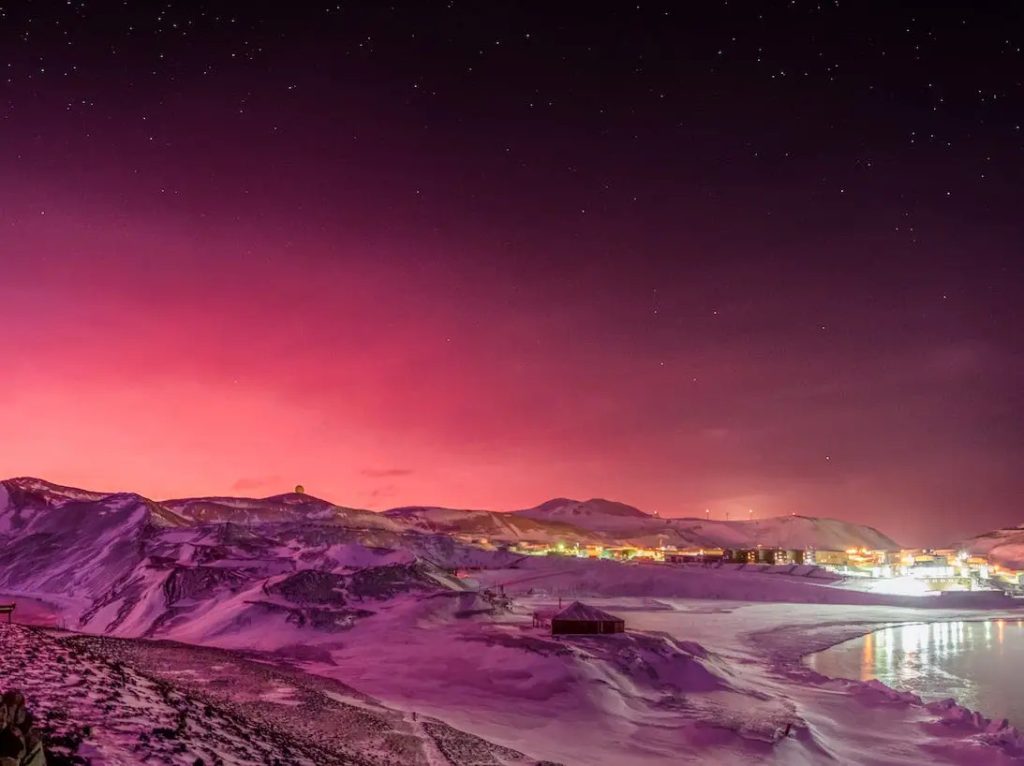Friday, August 23, 2024 A volcano near Grindavik in southwestern Iceland erupted for the sixth time since December, causing localized disruptions. The Icelandic Meteorological Office reported that the eruption began on Thursday evening at 9:26 pm (21:26 GMT) on the Reykjanes Peninsula. Despite the dramatic display of red lava spewing from a new 3.
9 km (2.4 miles) fissure, authorities have confirmed that the eruption does not pose an immediate threat to life and flights to and from Reykjavik’s Keflavik Airport remain unaffected. Localized Impact and Evacuations Iceland’s Ministry for Foreign Affairs announced that the eruption’s impact is confined to a small area near the fissure, which has led to the evacuation of residents in the nearby fishing village of Grindavik.

The village had already been largely evacuated following a previous eruption in December 2023, with only a few residents opting to stay overnight between eruptions. As of Thursday night, those who had returned were once again evacuated due to concerns over toxic gas plumes being blown towards the town by strong winds. Regional police reported that the evacuation process was smooth, with 22 or 23 houses currently occupied at the time of the eruption.
The Blue Lagoon geothermal spa, a major tourist attraction near Grindavik, was also evacuated, with videos circulating on social media showing sirens sounding as guests were escorted to safety. Impact on Air Travel and Tourism Isavia, Iceland’s national airport and air navigation service provider, has confirmed that flights at Keflavik Airport are operating as usual, with no disruptions reported. The eruption has not affected air travel, as the volcanic activity is localized and does not pose a threat to flight paths.
However, travelers planning to visit the Reykjanes Peninsula should be aware of road closures and potential delays due to the eruption. Local authorities have advised visitors to avoid the area around the eruption site and follow updates from official sources to ensure their safety. Ongoing Volcanic Activity The Reykjanes Peninsula, home to nearly 8% of Iceland’s population, has experienced a series of volcanic eruptions since 2021, with nine eruptions recorded in the region.
Scientists have warned that the peninsula could face continuous volcanic activity for decades or even centuries, making it a significant area of interest for both geologists and tourists alike. The latest eruption on the Sundhnúkur crater row, located east of Sylingafell Mountain, follows a similar pattern to previous eruptions, with magma emerging from giant cracks in the ground rather than a central crater. Despite the frequent activity, authorities have constructed barriers to redirect lava flows away from critical infrastructure, including the Svartsengi power plant and the Blue Lagoon spa.
Tourism and Safety Advice Iceland is known for its volcanic landscapes, making it a popular destination for volcano tourism. However, travelers are advised to stay informed about current volcanic activity and heed the advice of local authorities. The Icelandic Meteorological Office and the Ministry for Foreign Affairs regularly update their websites with the latest information on eruptions and safety measures.
For those planning to visit Iceland, particularly the Reykjanes Peninsula, it is essential to monitor travel advisories and be prepared for potential disruptions. While the latest eruption does not currently threaten air travel, road closures and evacuations may impact local travel plans. Grindavik eruption: A reminder of Iceland’s unpredictable nature As Iceland continues to experience frequent volcanic eruptions, travelers should remain vigilant and informed about the potential risks and disruptions.
The Grindavik eruption, while spectacular, serves as a reminder of the dynamic and unpredictable nature of Iceland’s geological landscape. For the most up-to-date information, visitors should consult official government and tourism websites before planning their trips..



















